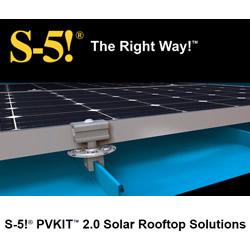2012, The Year of New Practical Thermoelectric Power Generators
Thermoelectric technology advanced by leaps and bounds both in industry and academics. New technologies by BioLite and Power Practical promise to be more reliable than solar panels in bad weather and at night.
New York, NY December 27, 2012
Power Practical, an alternative-energy company, is trying to solve an increasingly age-old problem. Over the past decades computers have gone from the size of a room to the size of a Pop-Tart, and in the process have become both more powerful and efficient. But now that our devices are portable, how do we keep them charged? Sure it's usually easy at home or at work. Still, there will always be those times when our battery dies and we have to wait to do something important.
Not surprisingly, most smart phone owners report at least occasional trouble keeping their devices charged, especially when away from work or home. To address this need, a number of new products have emerged. From the Goal0 Nomad solar panel to the New Trent iCarrier battery, there are many options for staying charged during power outages or on the go.
So far, small solar panels and portable battery packs are the first line of defense when the power goes out. But when the sun isn't available and solar won't work, there are still ways of harvesting electricity. Take thermoelectric technology for instance. Thermoelectric generators take a temperature difference and turn it directly into electricity with no moving parts. The past year saw major advances in the field of thermoelectric power generation both in academics and commercially.
Thermoelectrics are a class of materials that make electricity when hot on one side and cold on the other. This power can then be harnessed to power devices or charge a battery. Thermoelectric devices are also commonly referred to as peltier generators or seebeck generators, in tribute to the two major pioneers of the field: Jean Peltier and Thomas Seebeck.
2012 was a great year for thermoelectric generators. In the academic world, new records were set for �bulk' thermoelectric materials which may someday be used to improve thermoelectric generators used in the field. Two major articles were published in the prestigious journal Nature. The first was on a new material copper selenide (CuSe), with it's "liquid like" crystal structure which is optimized for thermoelectric power generation. The group made advancements with a well known thermoelectric material lead telluride (PbTe) by making it from nanosized crystals. These small crystals when formed together improve the temperature difference by slowing down the flow of heat.
This past year was even more exciting for the commercial world of thermoelectric generators. New products ranging from t-shirts to cooking pots hit the market, all promising to turn a difference in temperature into power--anywhere from 0.001 to 5 watts! Never before has there been such a range of peltier generators available to charge small USB-powered devices. Notable brand names include the PowerPot and Biolite. The Biolite is a wood-burning stove that uses a fan, battery, and thermoelectric generator to create a hot and smoke-free fire for cooking outdoors. It is said to produce 2-4 watts of power, which in some cases is enough to charge smartphones. The PowerPot is a peltier generator built into the bottom a backpacking pot which creates electricity while the user cooks up a meal. The PowerPot has a 5 watt output, enough to charge any Android or iPhone handset.
One advantage thermoelectrics offer against solar power is its ability to work indoors and at night. Solar energy may offer a simpler user experience but thermoelectric power can be tapped any time of the day and even in adverse weather conditions. This makes it especially useful for emergency preparedness and disaster relief. In many emergency situations, especially tornadoes and hurricanes, power outages are often accompanied by bad weather and a lack of sunlight. This creates the need for an energy source that works without sunlight, such as thermoelectric generators.
Featured Product

S-5!® PVKIT™ 2.0 Solar Rooftop Solutions
The concept of combining PV arrays with standing seam metal roofing is growing-for good reasons. Metal roofs have a life expectancy of more than 40 years. Shouldn't the mounting system last as long? With S-5! zero-penetration attachment technology and PVKIT 2.0, the solarized metal roof is the most sustainable system available -and without compromising roof warranties! PVKIT 2.0 is the also the best solution for attaching PV modules directly to any exposed fastener metal roof.
